Contents:
When people join our demo calls, Brandfolder often comes up. It’s one of those DAM names you can’t really avoid—if you’ve Googled “digital asset management,” you’ve probably seen it on the first page. And honestly, it makes sense. Brandfolder has built a solid reputation, and many folks use it as a reference point when they describe what they’re looking for.
I’ve heard things like, “Brandfolder is great, but…” more times than I can count. Sometimes it’s about budget. Sometimes it’s about usability or onboarding new team members who’ve never used a DAM before. The truth is, no DAM system is perfect for everyone. What works beautifully for one company might be a headache for another.
That’s why I wanted to put together this post. If you’re looking for something like Brandfolder—but with different pricing, easier navigation, or a feature set that better fits your workflow—I’ve got a few solid options for you to check out. Let’s dive into some Brandfolder alternatives and see what might be a better match for your team.
Brandfolder vs. Top DAM Alternatives
I put together this quick table to give you a better feel for how Brandfolder compares to other DAM tools out there—and yep, to finally answer that burning question: how much does it actually cost?
Let’s be honest, budget always plays a role. So if you’re weighing your options or trying to figure out what kind of DAM you can get for your money, this should give you a clearer picture—without digging through a dozen pricing pages.
| DAM Solution | Pricing | User Access | Key Features | Best For |
|---|---|---|---|---|
| Brandfolder | Starts around $1,600/month; median ~$20,620/year | Unlimited guest users | Asset analytics, OCR, SSO, brand portals | Large enterprises needing robust brand management |
| Pics.io | Plans from $50/month (Solo) to $1,100/month (Medium) | Customizable based on plan | AI tagging and visual search, face recognition, version control, Adobe/Google integrations | Small to mid-sized teams seeking customizable DAM |
| Bynder | Starts at ~$450/month; median ~$34,563/year | Customizable based on plan | AI metadata, brand guidelines, templates | Enterprises needing comprehensive brand management |
| Canto | Approximately $600/month or $7,200/year | Customizable based on plan | AI visual search, media delivery, video enhancements | Mid-sized businesses requiring robust DAM features |
| Cloudinary | Free tier available; paid plans from $89/month to $224/month | Based on usage | Image/video optimization, CDN delivery, APIs | Developers and media-heavy applications |
| Acquia DAM | Workgroup plan: up to 50 users; Enterprise: unlimited users | Up to unlimited users based on plan | AI metadata, REST API, branded portals | Organizations needing integrated DAM and PIM |
| Filecamp | Plans from $29/month to $89/month | Unlimited users | Custom branding, white-label, access control | Creative agencies and SMBs |
| ImageKit | Free plan available; Premium at $89/month; Enterprise at $500/month | Based on usage | Real-time media optimization, CDN, APIs | Developers and performance-focused teams |
| Nuxeo | Custom pricing based on deployment | Customizable | Low-code platform, content services, extensibility | Enterprises needing tailored content solutions |
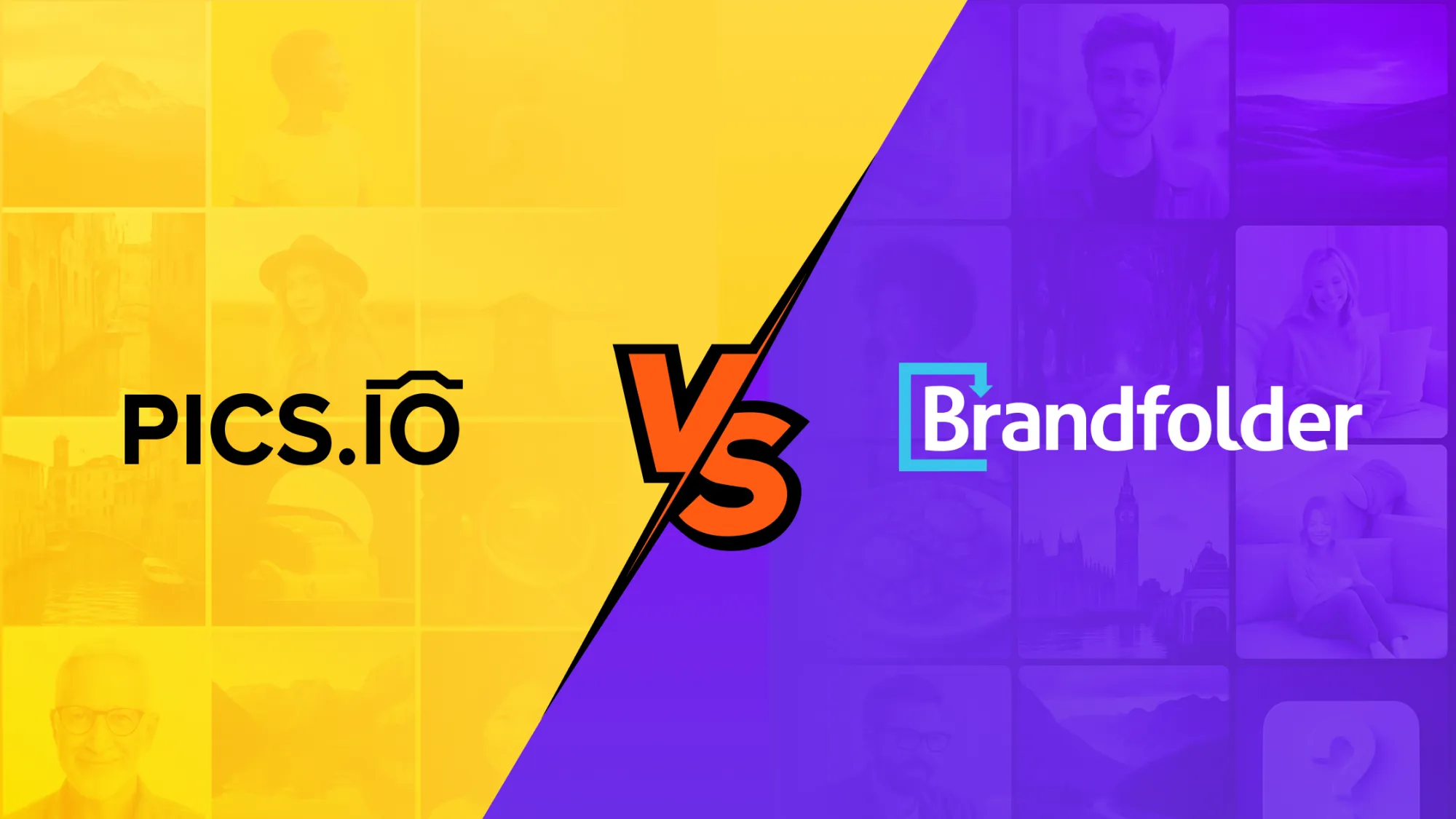
Brandfolder vs. Pics.io: What to Choose
Let me start with Pics.io. I’ve got two good reasons for that: first, I know it inside and out—it’s basically second nature to me. And second, I genuinely think it’s one of the strongest picks out there if you're serious about digital asset management.
So here’s the short version: Pics.io is a flexible, browser-based DAM platform that helps you organize everything—images, videos, audio files, documents, even web pages. It handles a wide range of file types and offers solid metadata tools that make searching and sorting a whole lot easier.
And when I say “wide range of file types,” I’m not exaggerating. For example, Pics.io supports video formats like MP4, MOV, AVI, WMV, FLV, M4V, and more—more than many other tools I’ve seen. That’s super useful if your team works with lots of multimedia content.
One of the features I always highlight during demos is version control. You can compare different versions side by side, which is great for keeping track of changes without the chaos. You can also leave comments, tag your teammates, or approve assets—all without ever leaving the system.
On top of that, Pics.io gives you built-in asset analytics. It’s nothing overcomplicated, but it gives you just enough data to understand what’s getting used and what’s collecting dust. That insight can be gold for marketing and content teams trying to focus on what works.
Then there’s Brandfolder—a big name in the DAM world and a go-to for large enterprises. It’s packed with tools, and no doubt it’s a strong product. But here’s what I’ve noticed: that depth can also be a hurdle. Smaller teams or those just getting started with DAM often find Brandfolder a bit much. It can feel like too many levers and dials when all you really want is a clean, easy way to manage your assets.
That’s why so many teams come to me asking about Brandfolder alternatives. They’re looking for something like it, but easier to navigate or just more affordable. Let’s dig into how the two actually stack up across key areas.
Onboarding
Pics.io makes getting started pretty painless. If you're on the Micro plan or higher, you get a dedicated Customer Success Manager—someone who knows your setup and is there to help when things get tricky. Plus, we offer 1-on-1 training if you want a walkthrough.
According to G2, Pics.io scores a 9.1 for ease of setup, while Brandfolder scores 8.2. That difference may look small, but when you're onboarding across departments, it matters.
Brandfolder’s onboarding can take longer, especially for bigger teams. The tool is rich in features, but that also means more time learning how to use them. If you've got tight deadlines, this can definitely slow you down.
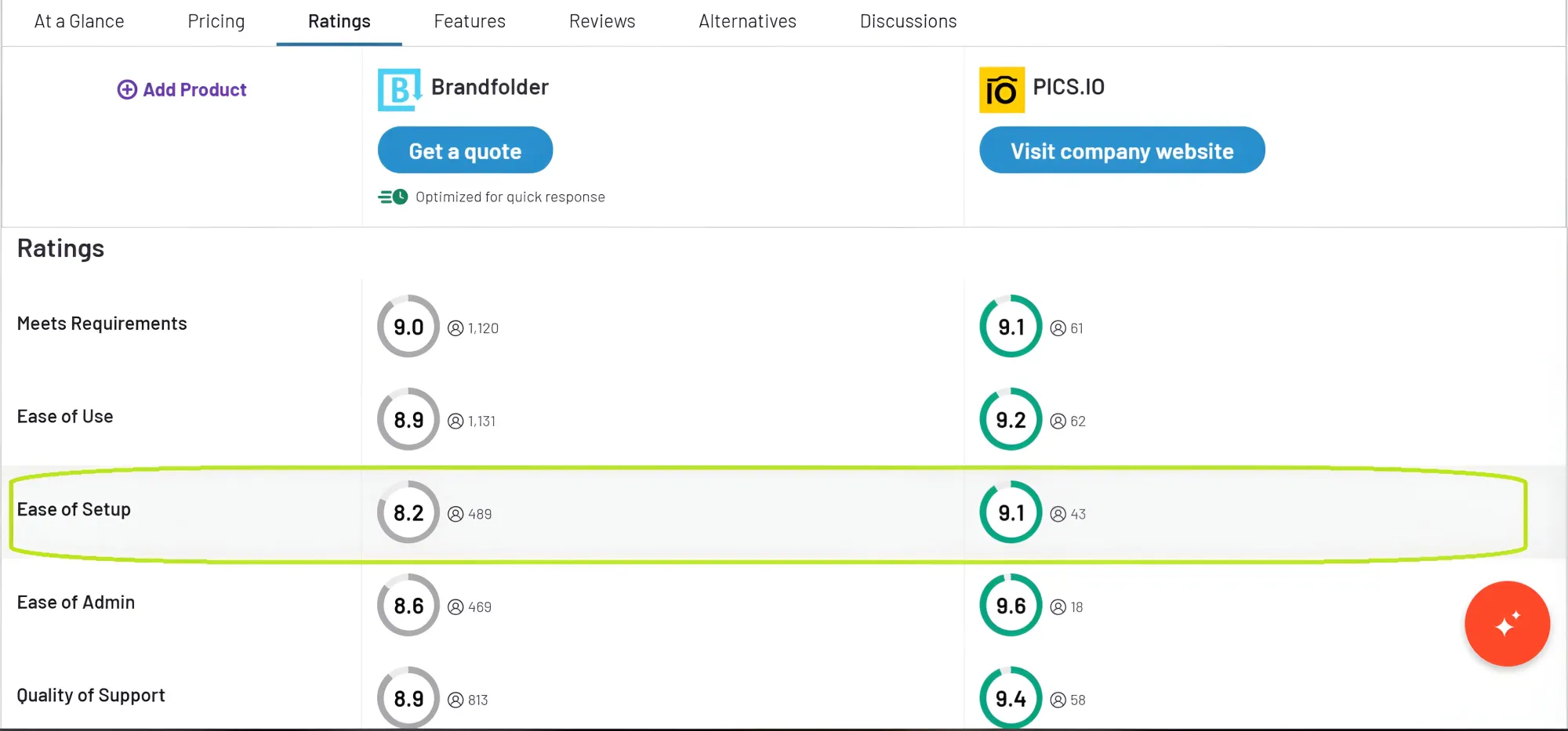
Features
Pics.io has all the essentials: powerful search, deep metadata tagging, version tracking, AI tools, and easy file sharing. It’s intuitive, even if you’re not super techy.
Brandfolder? Tons of features too—but that’s where some people get stuck. Not every team needs every feature, and when there’s too much going on, things tend to get ignored. I’ve heard from a few users who felt like they were only using half the product because the rest was just too much to figure out.
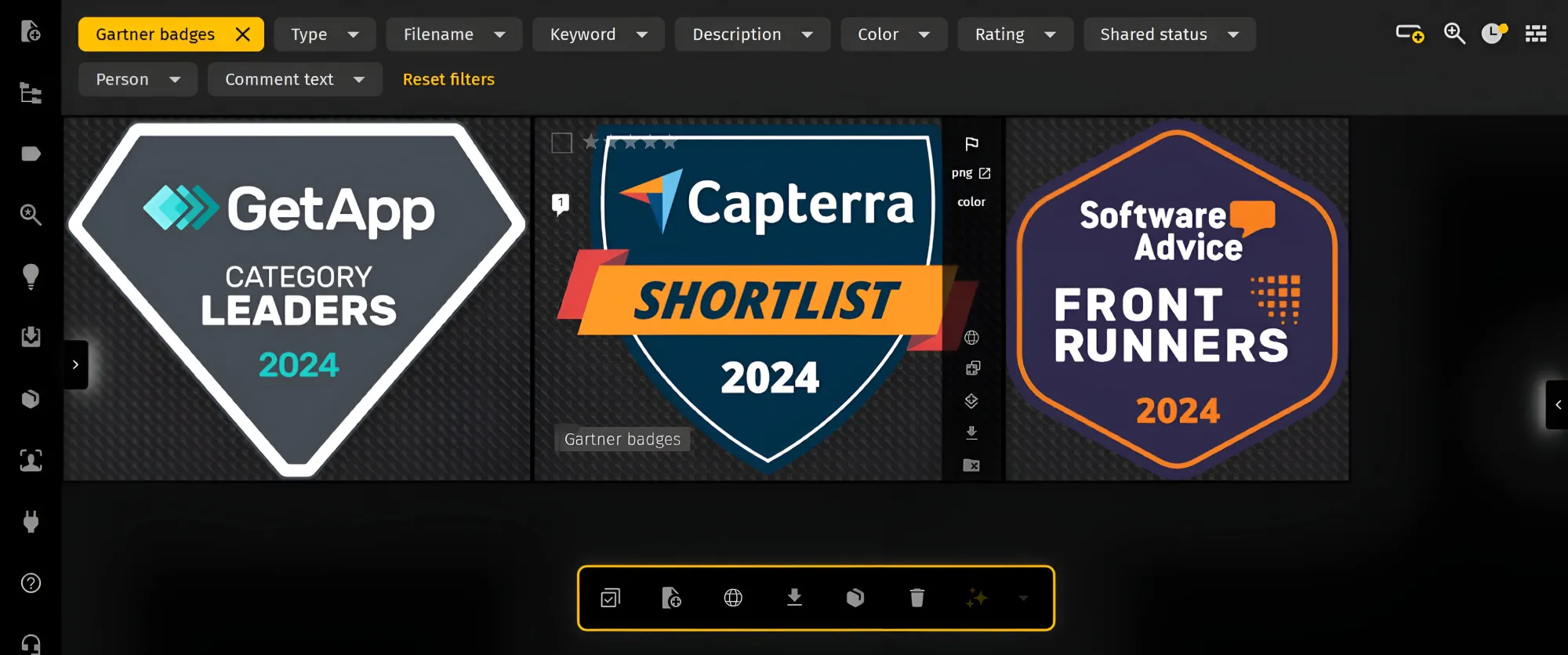
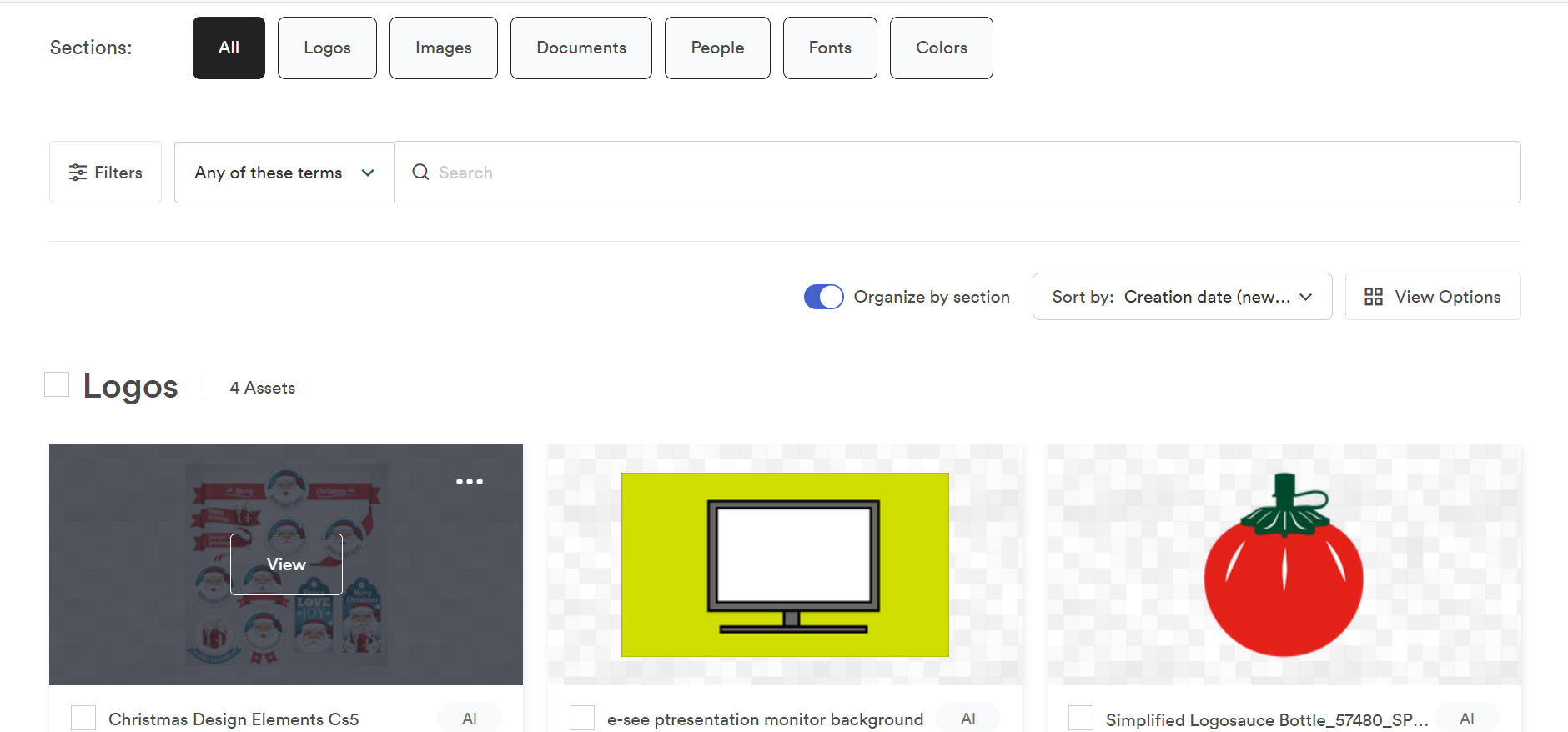
Pricing
Ah yes—Brandfolder cost. This one comes up a lot.
Pics.io has five pricing tiers starting at $50/month. It’s clear, flexible, and you can scale it depending on your team size. You can also buy add-ons like AI credits or more user seats if needed. It’s all out in the open—no demo needed just to see what you'll pay.
Brandfolder, on the other hand, doesn’t list pricing publicly. You’ll have to book a call with their sales team to get details. They offer just two plans: Premium and Enterprise. According to ITQlick, pricing starts around $1,600 per feature. So yeah—it’s not exactly aimed at lean teams.
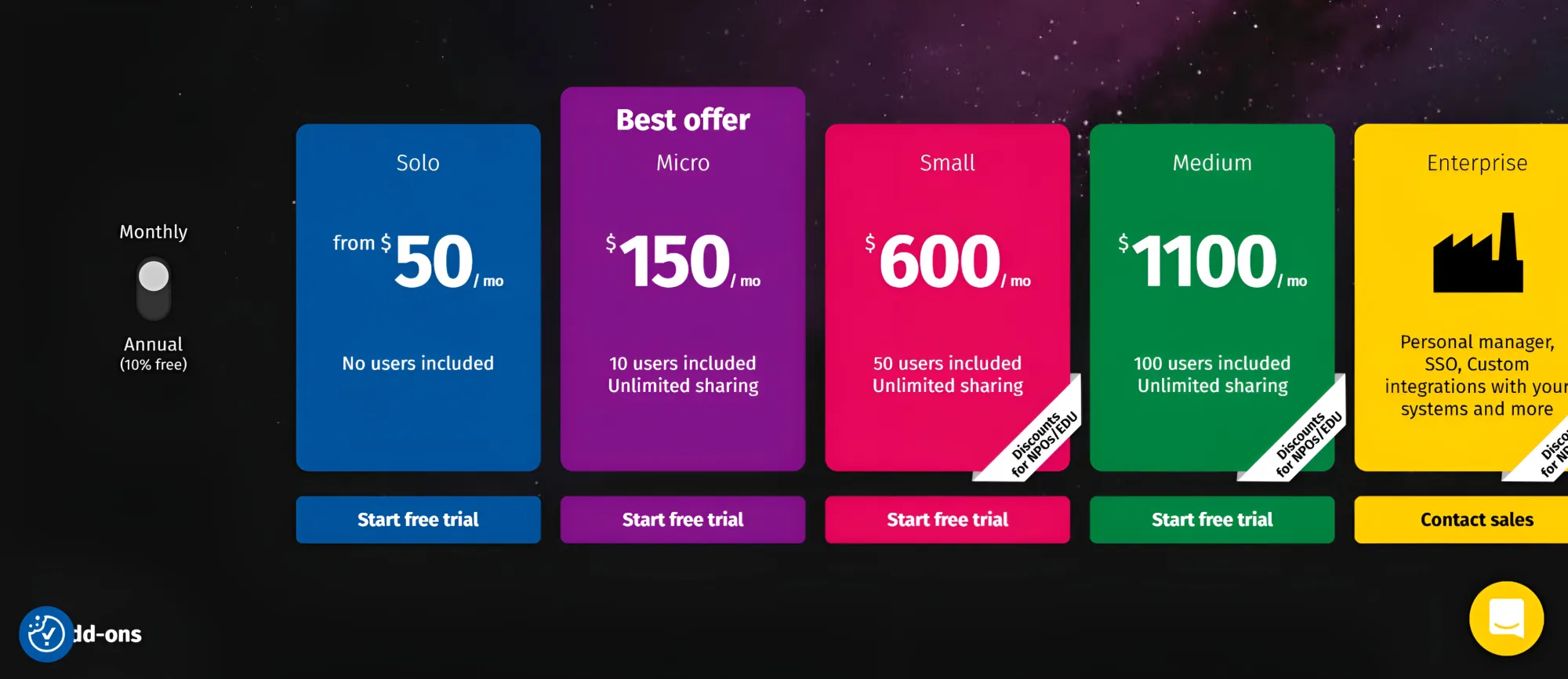
Integrations
Pics.io plays nicely with tools like Slack, Trello, Hootsuite, and Shopify. But the thing that really sets it apart is how it works with Google Drive, Dropbox, and Amazon S3. It runs right on top of your existing storage, so there’s no need to move anything. Upload a file to Drive, and boom—it shows up in Pics.io too. That kind of syncing makes life easier and keeps your file structure intact.
Brandfolder doesn’t offer integration with Google Drive or Amazon, which is a deal-breaker for some teams. It does support popular platforms like Canva, Figma, and HubSpot though—so depending on your stack, it may still cover what you need.
Brandfolder Competitors: My Quick Take on the Alternatives
Over time, I’ve had conversations with a lot of teams looking for something “like Brandfolder, but…” Whether it’s about budget, flexibility, or just wanting something easier to use, people are actively comparing options.
So, I pulled together a quick roundup of the most common Brandfolder alternatives I’ve either worked with myself or heard mentioned by customers on demo calls. Each one has its strengths—and of course, its quirks too. Here's my personal take on how they stack up.
Bynder
Bynder continues to be a go-to for creative and marketing teams. They've recently introduced a Google Workspace integration, allowing users to search and select assets directly within Google applications, enhancing team collaboration by creating a single source of truth for digital assets. Features like Dynamic Asset Transformation and branded templates make content creation seamless.
However, Bynder's focus remains primarily on creative teams. Other departments might find it less intuitive. Additionally, their implementation services require custom scoping, which can lead to unpredictable costs during wider rollouts.
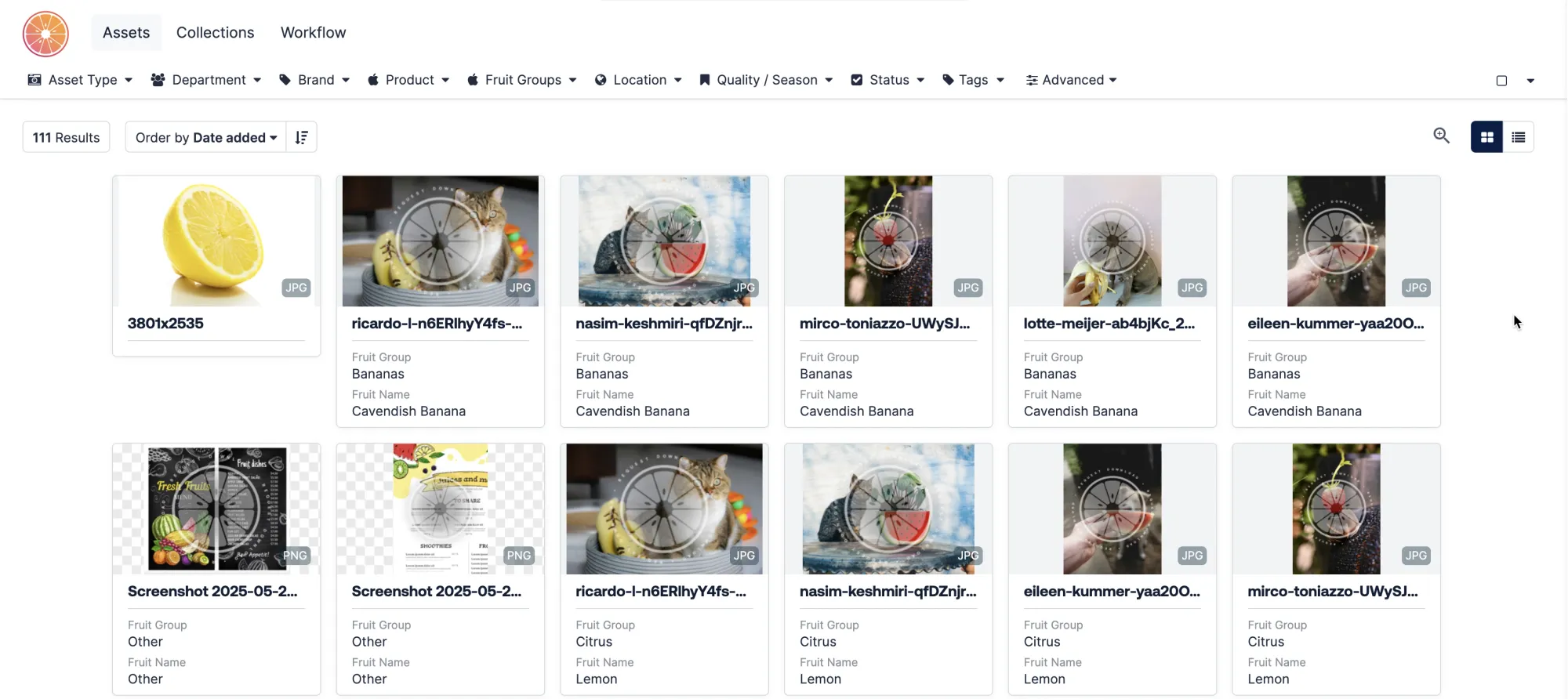
Canto
Canto has stepped up its game with AI-powered search capabilities. Their Visual Search can understand actions, moods, and contexts in images and videos, making it easier to find exactly what you need . They've also launched Canto PIM, combining digital asset management with product information management for a more comprehensive content lifecycle.
While these features are impressive, some users might find the AI tagging still developing, requiring occasional manual metadata management.
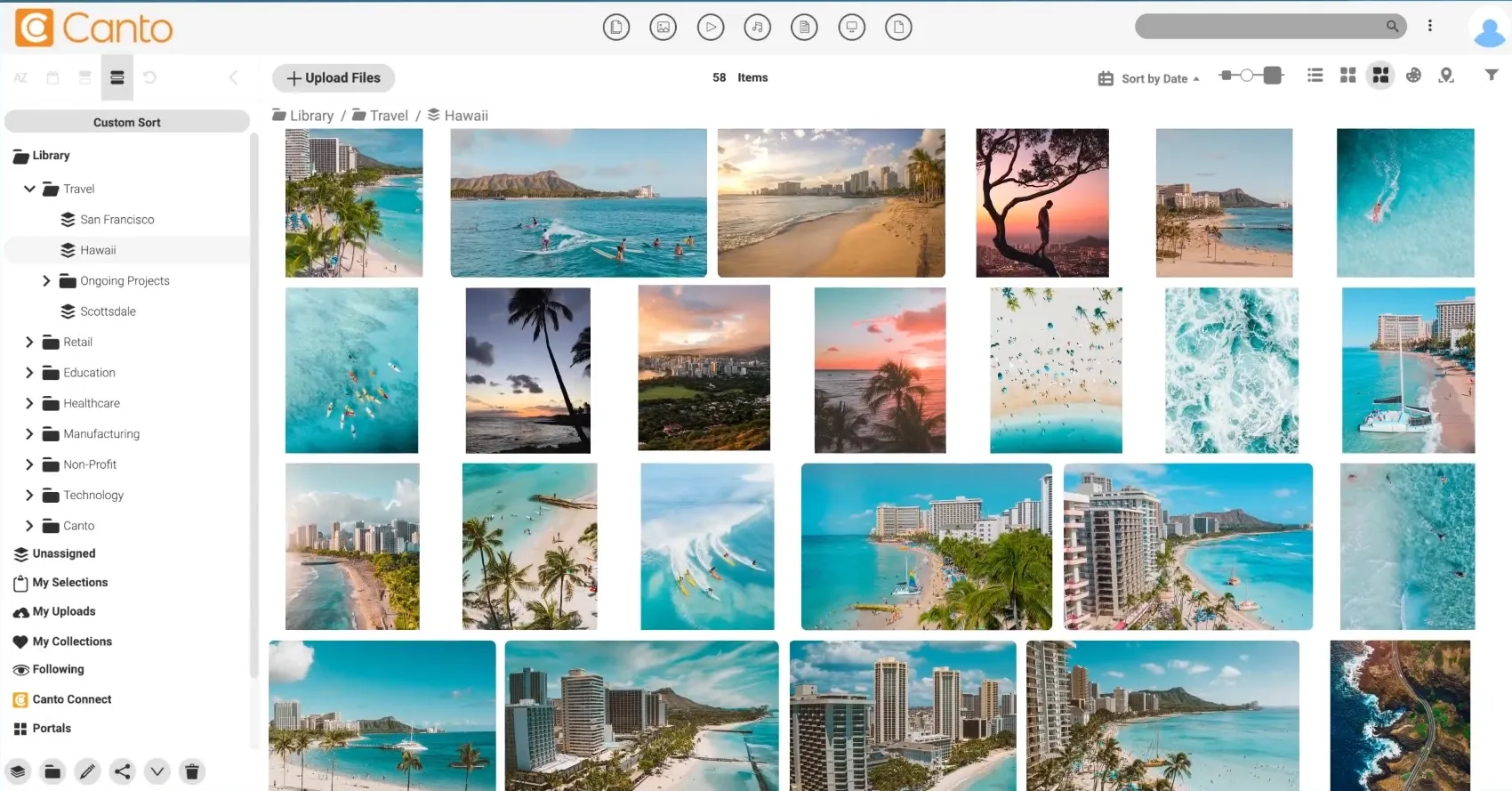
Cloudinary
Cloudinary remains a favorite among developer-heavy teams. Their AI-driven content analysis and dynamic image and video transformations are top-notch . Recent enhancements include AI-powered workflow automations and content moderation features.
However, compared to some competitors, Cloudinary offers limited customization in its interface and setup. Still, if automation is your priority, it's a strong contender.

Acquia (formerly Widen)
Acquia has introduced expanded AI tooling, making it easier to create, organize, and find digital content, accelerating speed to market and boosting content ROI . Their DAM system offers centralized storage, intuitive search functions, and effective distribution capabilities.
A notable limitation is the baseline storage allotment in the Workgroup package, which offers only 1TB, relatively small compared to some other DAM solutions.
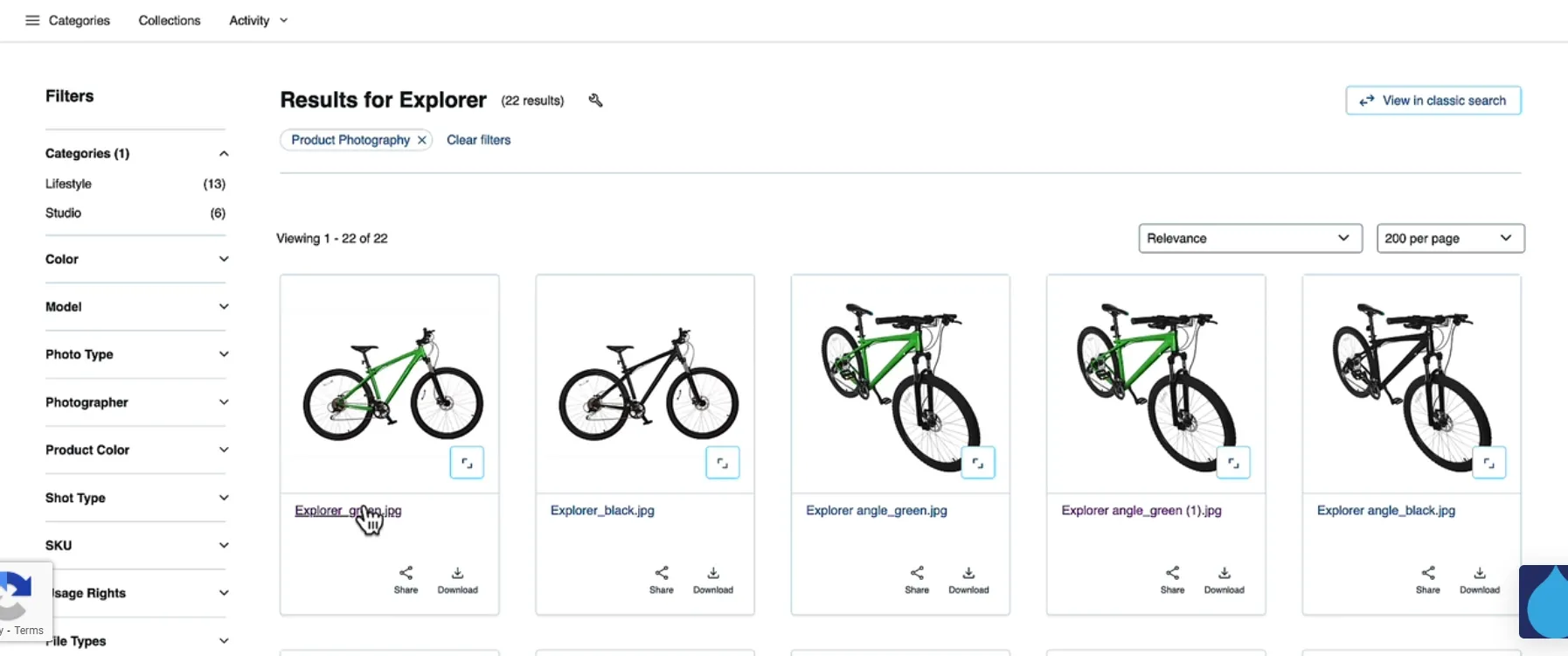
Filecamp
Filecamp is a straightforward, web-based solution for managing digital assets. It offers core functionalities like secure file sharing, custom branding options, and granular permission settings . With its unlimited users policy, companies can scale their user base without additional costs.
However, the interface might feel outdated compared to newer, sleeker DAM platforms. For companies prioritizing a cutting-edge user experience, Filecamp’s traditional approach might feel a bit behind the times.
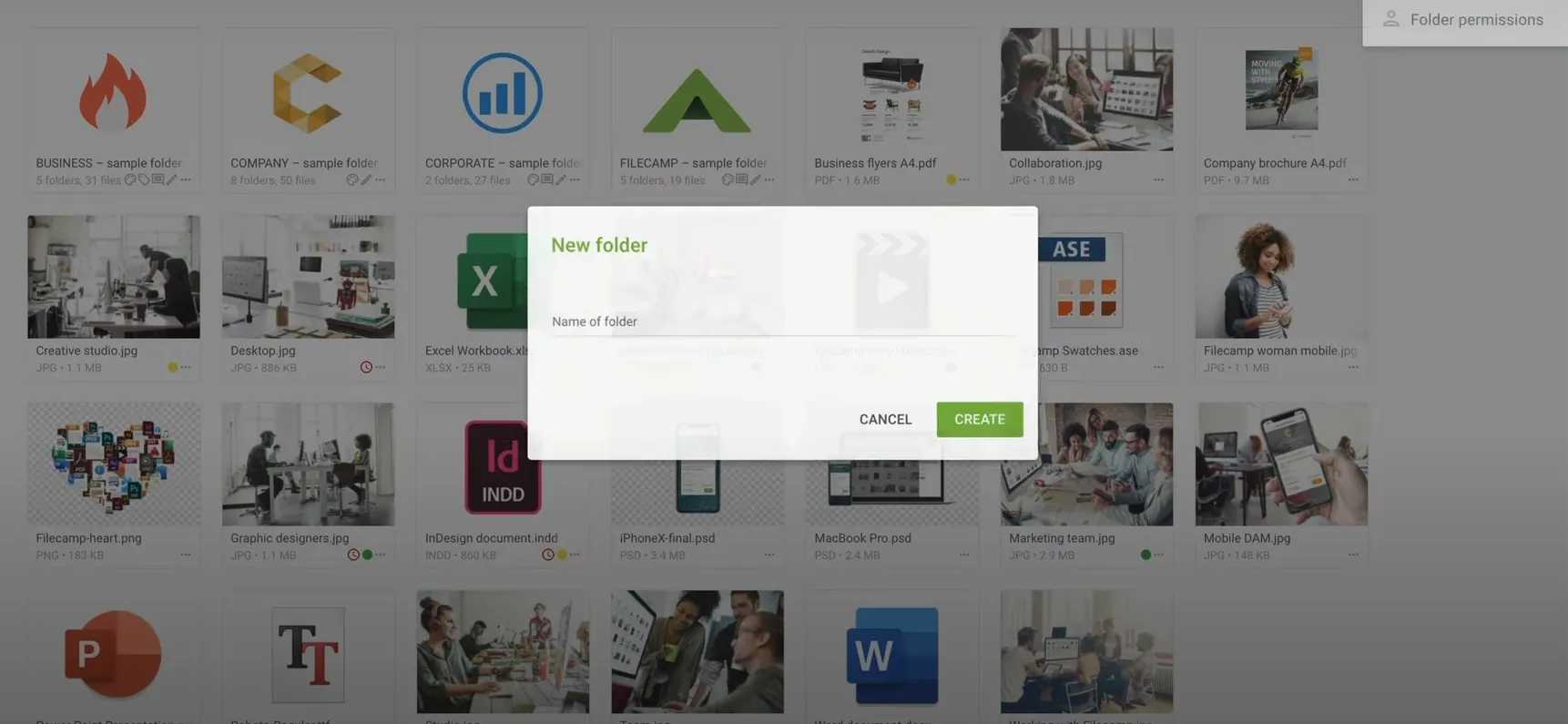
ImageKit
ImageKit has introduced AI-powered image creation from text prompts, background changes, and real-time transformations, making it a powerful tool for developers and marketers . Their AI-based text and visual search, along with automatic image tagging, simplify organizing and finding assets.
Despite its multiple features, ImageKit's pricing structure and storage limitations can be challenging, especially for startups or smaller businesses looking to scale.
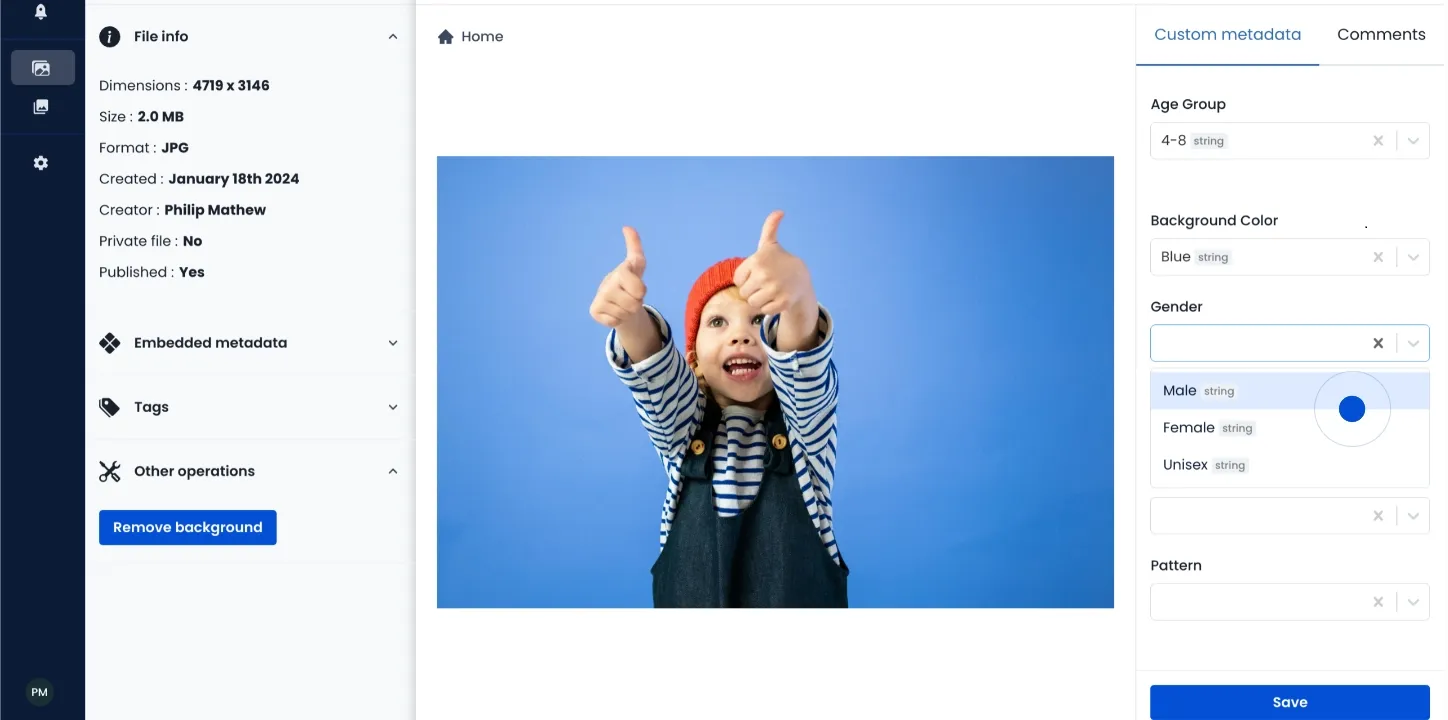
Nuxeo
Nuxeo excels in handling large volumes of content across various formats, supporting businesses in archiving, organizing, and accessing their digital repositories . Its scalability and customization capabilities make it ideal for sectors with intensive asset management needs.
However, its complexity in setup and deployment can be a significant hurdle. The platform requires considerable technical skill to configure and optimize, potentially leading to long implementation times.
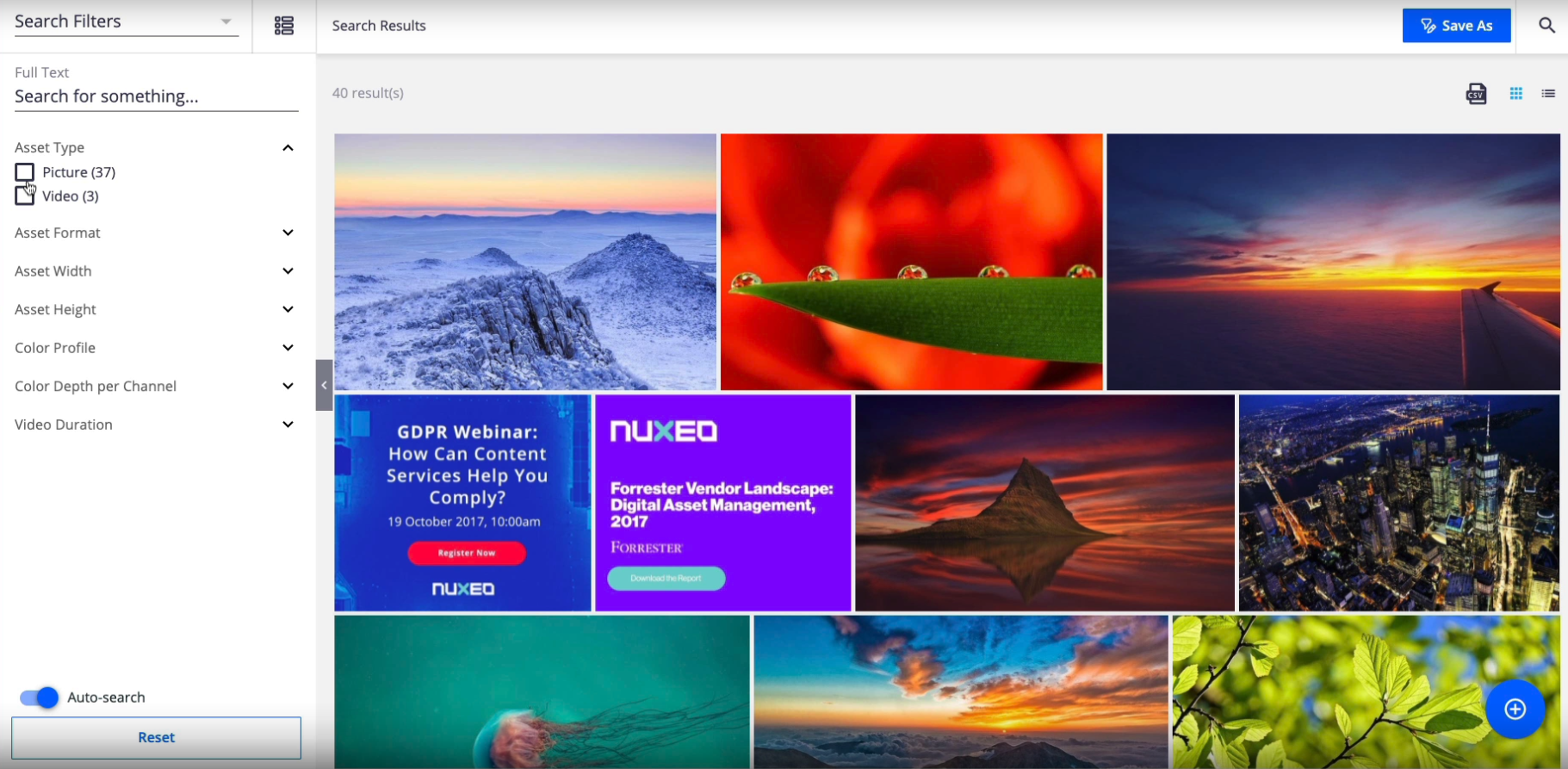
Adobe Experience Manager (AEM Assets)
Adobe AEM Assets offers a customizable digital asset management system that lets you discover, govern, and activate millions of assets . With deep integration with Adobe Creative Cloud and Experience Cloud, it enhances workflow efficiency across diverse stakeholder groups. Recent updates include AI-powered features like Smart Tags, Smart Crop, and automated alt-text generation.
The platform’s interfaces are quite technical, which might be daunting for users without advanced DAM expertise. Additionally, Adobe’s premium pricing may be a barrier for smaller entities or those looking for a cost-effective DAM solution.
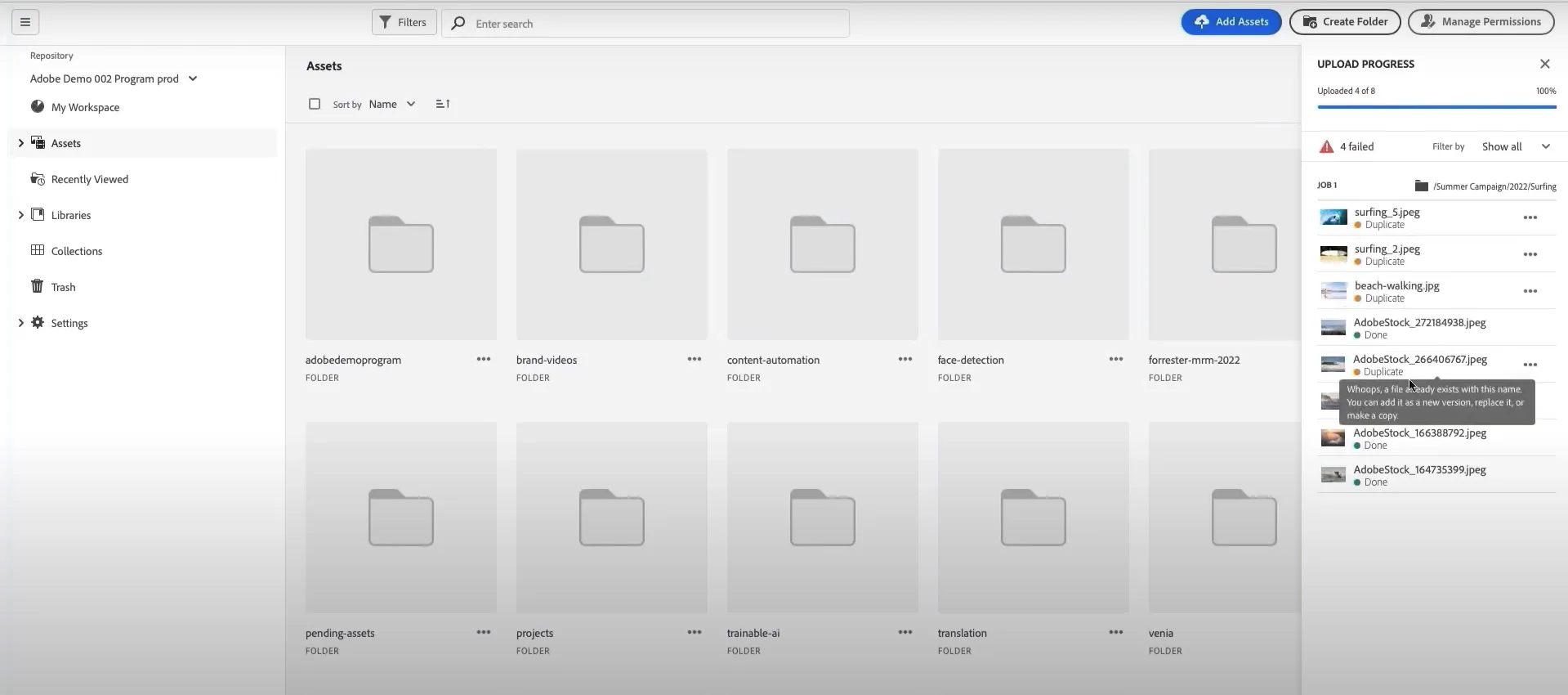
Wrapping Up: No “One-Size-Fits-All” in DAM
After working with teams of all shapes and sizes, one thing I know for sure: there’s no such thing as a number one DAM for everyone. Some teams want deep creative tools, others care more about easy sharing, automation, or just not spending a fortune.
Brandfolder is solid, no question—but it’s not the best for everyone. That’s why I always suggest looking at your actual needs before picking a platform. Do you need something budget-friendly? A tool your developers will love? A DAM that your whole team can start using today without a long onboarding process?
The best DAM is the one that fits you.
To make things easier, here’s a quick cheat sheet with some straight-up alternatives to Brandfolder based on what you might actually need:
| If you need something like Brandfolder, but… | Try This Instead |
|---|---|
| But you're working with a tighter budget and want something easy to set up | Pics.io |
| But your team is mostly creatives who need built-in design tools and branded templates | Bynder |
| But you need faster external sharing and built-in format conversion | Canto |
| But your developers want more control, APIs, and automation features | Cloudinary |
| But you're looking for a scalable DAM that includes PIM capabilities too | Acquia (Widen) |
| But you want something simpler, with unlimited users and predictable pricing | Filecamp |
| But your priority is fast image delivery and optimization for web and mobile | ImageKit |
| But you need deep customization and can handle a more technical setup | Nuxeo |
| But your team already lives in Adobe Creative Cloud and wants tight integration | Adobe Experience Manager (AEM) |
Vlad is a consultant who helps B2B companies in English-speaking markets optimize sales processes, lead demo calls, and implement IT solutions. Since 2019, he’s helped over 400 mid-to-large businesses implement DAM and create efficient content management workflows.
Did you enjoy this article? Give Pics.io a try — or book a demo with us, and we'll be happy to answer any of your questions.




